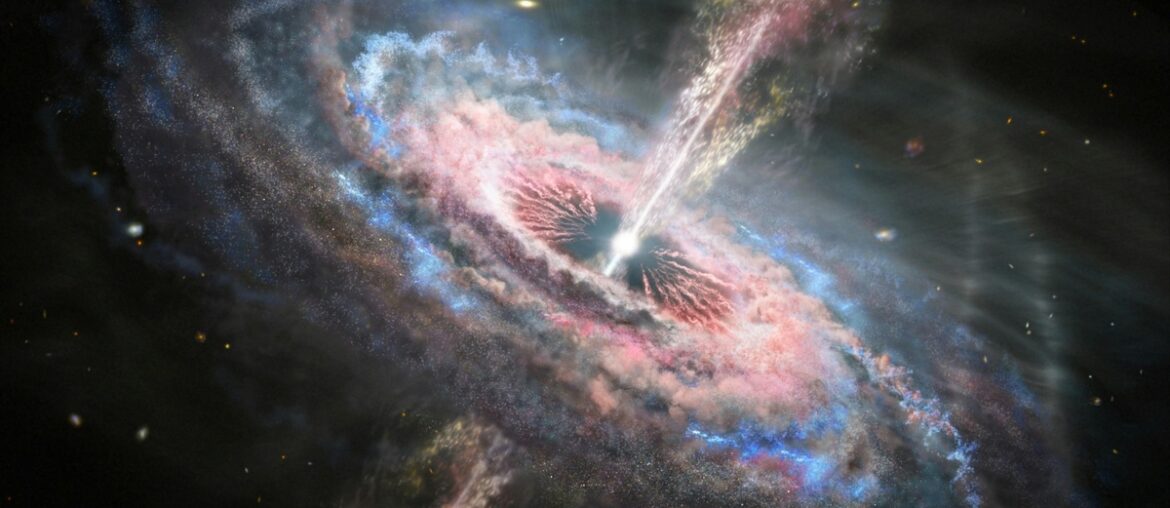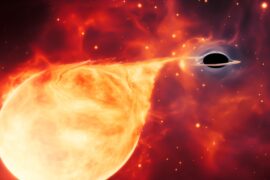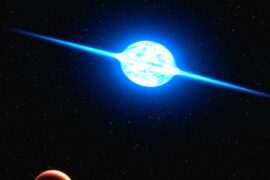In 1963 Maarten Schmidt identified the quasar 3C 273 as an object at cosmological distance, revealing sources billions of times brighter than typical stars and changing how astronomers measured the distant universe.
Cataloguing the most luminous objects in the universe matters because these outliers reveal extreme physics — from runaway nuclear burning in massive stars to highly efficient accretion onto black holes and relativistic jets — and because they shape galaxy evolution and trace cosmic history.
This numbered tour lists ten of the brightest astrophysical sources, grouped into three categories: massive stars and stellar explosions; accretion-powered powerhouses; and transient high-energy plus large-scale cosmic sources. Each entry gives concrete examples, measurable numbers (luminosities, dates) and notes on what studying them teaches us about the cosmos.
Massive Stars and Stellar Explosions
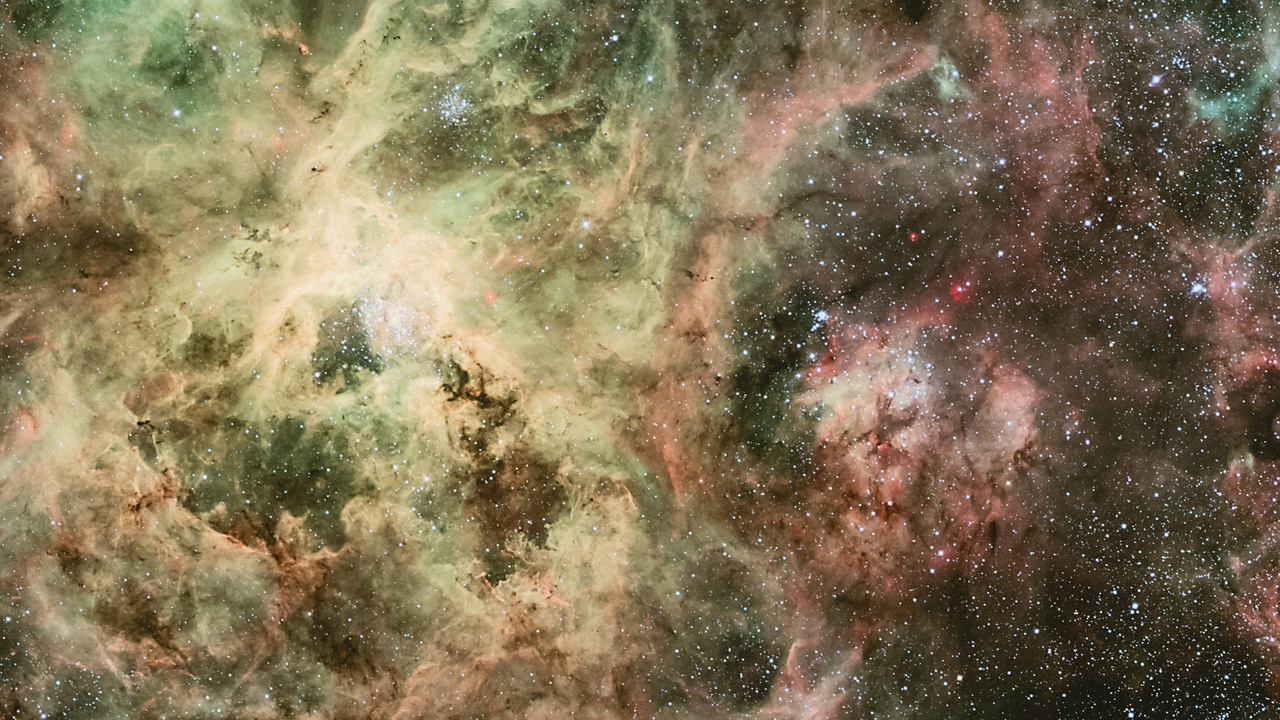
Single stars and their explosive deaths can reach astonishing brightness. The most massive, short-lived stars emit millions of times the Sun’s light persistently, while some supernovae and superluminous supernovae produce brief peaks that outshine entire galaxies.
These sources matter for nucleosynthesis, chemical enrichment of galaxies, and as distance beacons. They also test stellar-evolution models under extreme mass-loss and rapid nuclear-burning conditions.
1. R136a1 and Hypergiant Stars
A few individual stars are the brightest persistent stellar sources; R136a1 in the 30 Doradus cluster is a leading example. Spectroscopic modeling and Hubble/ESO Very Large Telescope data place its luminosity at roughly 5–9×10^6 L☉, with mass estimates that were once quoted above 200 M☉ (current models favor somewhat lower initial masses after strong winds).
Extreme surface temperatures and prodigious mass loss (powerful stellar winds) power that luminosity. Observations with HST and VLT resolve the crowded cluster and separate R136a1 from nearby stars, making it a key test case for upper-mass limits and population-synthesis models.
Historically cited red hypergiants like VY Canis Majoris illustrate a different extreme: very large radii and heavy mass loss, with luminosities also in the millions of L☉ but different physical drivers. These rare stars probe the end stages of massive-star evolution.
2. Luminous Blue Variables (Eta Carinae)
Luminous blue variables (LBVs) undergo dramatic brightening episodes; Eta Carinae is the canonical case. Its mid-19th-century Great Eruption (roughly 1837–1858, with the peak in the 1840s) made it temporarily one of the brightest stars in the southern sky, with an inferred luminosity during the eruption of several million L☉.
Modern monitoring with HST and Chandra, plus spectroscopy of the Homunculus Nebula, shows massive mass ejection and complex wind interactions. LBVs provide direct constraints on pre-supernova mass loss and therefore on the kinds of supernovae massive stars produce.
P Cygni and other historical variables offer additional records; taken together, LBVs help map the transitions between steady fusion-powered output and explosive, shock-driven transients.
3. Supernovae and Superluminous Supernovae (SLSNe)
Supernovae produce some of the brightest transient displays. Typical Type Ia and core-collapse peaks reach roughly 10^9–10^10 L☉, but superluminous supernovae (SLSNe) can attain peak luminosities of order 10^11–10^12 L☉ (absolute magnitudes near −21 to −23).
SN 1987A (1987) remains invaluable because its proximity in the Large Magellanic Cloud allowed direct neutrino detection and detailed light-curve study, anchoring theoretical models. SN 2006gy is a well-known SLSN example whose extreme brightness likely arose from strong circumstellar interaction or central-engine input.
Wide-field surveys (Pan-STARRS, the Palomar Transient Factory and its successors) have greatly increased SLSN discovery rates since the 2010s, giving astronomers statistics to test explosion mechanisms and heavy-element production in the early universe.
Accretion-Powered Powerhouses
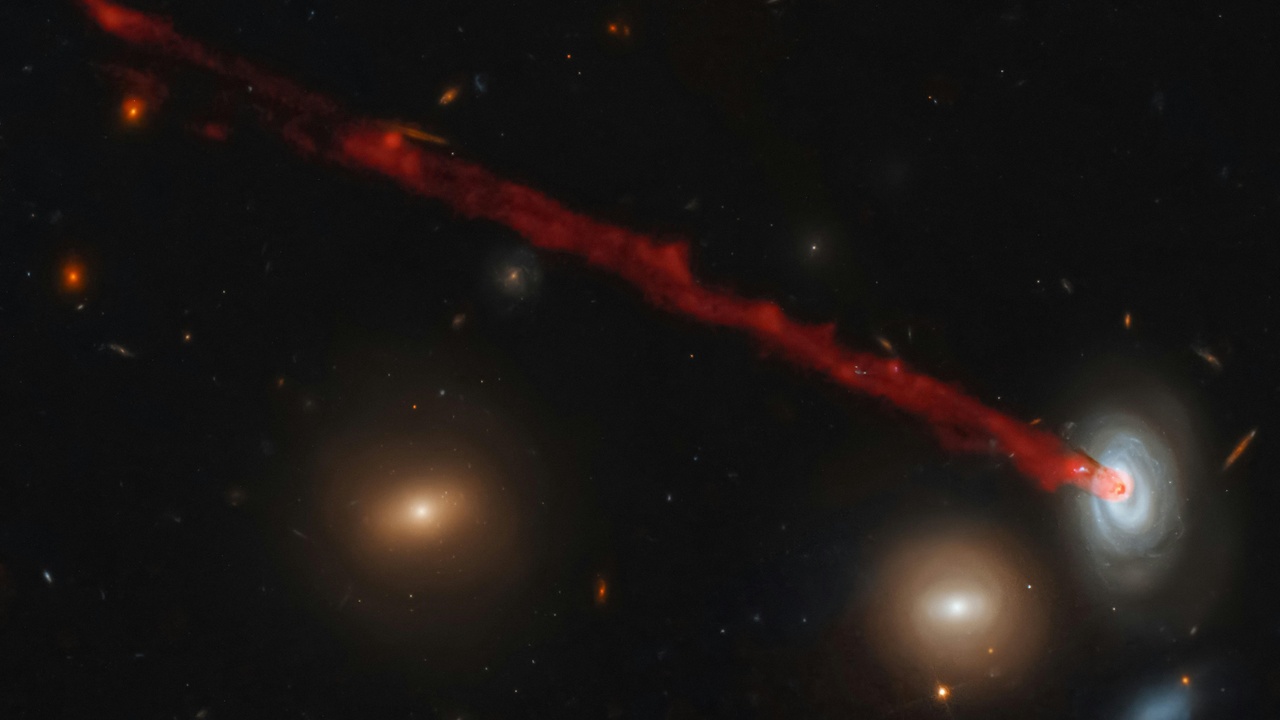
Accretion onto compact objects converts mass to energy far more efficiently than nuclear fusion, making it a dominant route to extreme luminosity. From stellar-mass black holes to supermassive black holes, accretion disks and jets can outshine whole galaxies.
Observational signatures include broad optical/UV emission lines, strong X-rays, and relativistic radio or gamma-ray jets. These central engines also regulate star formation in their hosts through feedback and provide beacons for studying intervening gas across cosmic time.
4. Quasars (e.g., TON 618, 3C 273)
Quasars are persistent, extremely luminous sources powered by accretion onto supermassive black holes. Bolometric luminosities for the brightest can reach order 10^13–10^14 L☉, making them among the most powerful continuous emitters known.
Maarten Schmidt’s 1963 redshift measurement for 3C 273 established the cosmological nature of quasars. TON 618 is an oft-cited ultraluminous example; spectral modeling and line-width scaling suggest a black hole mass of order 10^10–10^11 M☉ and correspondingly enormous output.
Quasars serve as backlights for absorption-line studies of intervening gas and as signposts of early black-hole growth, with surveys now finding objects at z≈7.5 (2018–2021 era) that probe the first billion years after the Big Bang.
5. Blazars and Relativistic Jets (e.g., 3C 279)
Blazars are active galactic nuclei whose jets are pointed nearly toward Earth, producing strongly beamed and rapidly variable emission from radio to gamma rays. Relativistic beaming can amplify the apparent luminosity so that flares momentarily rival or exceed the integrated light of the host galaxy.
3C 279 is a classical blazar with historic gamma-ray flares detected by Fermi-LAT; variability down to hours constrains the emission region to compact zones near the jet base. Very long baseline interferometry (VLBI) and polarization studies reveal moving knots and magnetic structure in the jet.
Blazar studies inform particle-acceleration physics and how jets deposit energy into the intergalactic medium across large distances.
6. Ultraluminous X-ray Sources and Microquasars (SS 433, ULXs)
On smaller scales, accreting stellar remnants—black holes and neutron stars—reach X-ray luminosities above the classical Eddington limit and appear as ultraluminous X-ray sources (ULXs). Typical ULX luminosities exceed 10^39 erg/s, well above normal X-ray binaries.
SS 433 is a nearby microquasar famous for persistent relativistic jets, while Holmberg II X-1 is a frequently cited extragalactic ULX. NuSTAR and XMM-Newton have also revealed pulsing ULXs, showing that neutron stars (not just black holes) can power extreme super-Eddington emission.
These systems provide local laboratories for super-Eddington accretion and jet formation that scale up to active galactic nuclei physics.
7. Tidal Disruption Events (TDEs)
When a star wanders too close to a massive black hole it can be torn apart; the resulting tidal disruption event produces a bright accretion flare. Typical TDE peaks reach roughly 10^43–10^45 erg/s and last weeks to months as debris falls back and accretes.
ASASSN-14li (2014) is a well-observed TDE with rich X-ray, UV, and optical follow-up, and PS1-10jh (Pan-STARRS) is an earlier illustrative case. Wide-area surveys such as ASASSN and ZTF have dramatically increased TDE discovery rates in recent years.
TDEs offer short-lived snapshots of accretion physics and a method to find dormant black holes in otherwise inactive galaxies.
Transient High-Energy Phenomena and Large-Scale Cosmic Sources
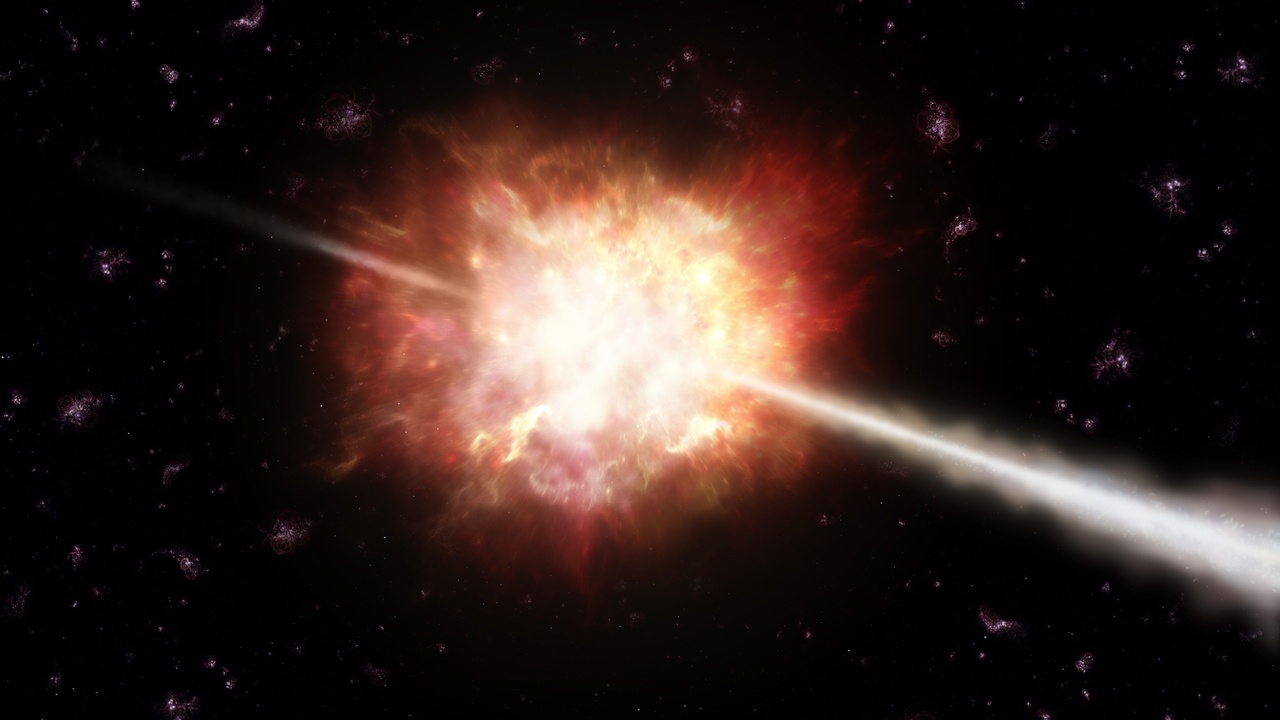
This group covers brief, extreme transients like gamma-ray bursts and magnetar giant flares plus galaxy-scale sources such as starburst galaxies and ULIRGs whose integrated output is enormous. Transients can reach far higher instantaneous power than persistent objects, while collective processes in galaxies produce sustained high luminosities across bands.
Modern time-domain surveys and space telescopes (Swift, Fermi, NuSTAR, ZTF, ASASSN) have been critical to finding and characterizing these phenomena, often within hours of the event.
8. Gamma-Ray Bursts (GRBs)
Gamma-ray bursts are the brightest electromagnetic events known during their short lifetimes. The most powerful long GRBs have isotropic-equivalent peak luminosities that can exceed 10^52 erg/s, if one assumes emission is radiated equally in all directions.
GRB 130427A (2013) was an exceptionally bright nearby long GRB with high-energy photons detected by Fermi and ground-based telescopes. GRB detections by Swift and Fermi have established long GRBs as linked to massive-star collapse, while short GRBs are tied to compact-object mergers (the neutron-star merger GW170817 produced GRB 170817A).
Because they are visible to extreme redshifts, GRBs probe star formation and massive-star deaths across cosmic time and serve as beacons for the distant universe.
9. Magnetar Giant Flares (e.g., SGR 1806-20)
Magnetar giant flares are brief, intense X-ray/gamma-ray outbursts from neutron stars with ultra-strong magnetic fields. The December 27, 2004 flare from SGR 1806-20 released an estimated ~10^46 erg in a fraction of a second, briefly outshining every other Galactic high-energy source.
Such flares are detectable across the Galaxy and, if close enough, can perturb Earth’s ionosphere. Studying giant flares constrains extreme magnetic-field physics and dense-matter equations of state and has motivated some models for a fraction of fast radio bursts.
SGR 1900+14 (1998) offers an earlier observational benchmark for the magnetar class and its dramatic behavior.
10. Starburst Galaxies and ULIRGs (Arp 220)
When assessing integrated light rather than single objects, starburst galaxies and ultraluminous infrared galaxies rank among the brightest cosmic sources. ULIRGs commonly exceed 10^12 L☉ in the infrared; Arp 220 is a textbook example with enormous dust-reprocessed luminosity.
Major mergers often drive starbursts, producing star-formation rates of hundreds of M☉ per year and burying prodigious UV/optical output in dust that re-emits in the infrared. These systems are important for understanding the cosmic peak of star formation at redshifts z≈1–3.
Observations across IR, submillimeter and radio bands, plus ALMA imaging, reveal compact starburst cores and sometimes embedded AGN that together power the extreme luminosities.
Summary
- Extreme luminosities arise from different physics: nuclear fusion powers hypergiants, accretion onto compact objects is far more efficient, and shocks or jets create brief but enormous transients.
- Transient peaks (GRBs, magnetar giant flares, SLSNe) can exceed the steady output of quasars for short periods, while quasars and ULIRGs dominate persistent and integrated luminosity over long timescales (recall 3C 273 and GRB 130427A as contrasting examples).
- Studying these sources advances multiple fields: cosmology and reionization with high-redshift quasars and GRBs, stellar evolution and nucleosynthesis with supernovae and LBVs, and extreme plasma and magnetic physics with jets and magnetars.
- Time-domain missions and surveys (Swift, Fermi, ASASSN, ZTF) continually find new examples and rare events, increasing our statistical grip on the brightest objects in the universe and the physics that powers them.
- Follow current surveys and public NASA/ESA resources for alerts and data releases if you want near-real-time access to discoveries of these high-luminosity astronomical sources.
Enjoyed this article?
Get daily 10-minute PDFs about astronomy to read before bed!
Sign up for our upcoming micro-learning service where you will learn something new about space and beyond every day while winding down.

